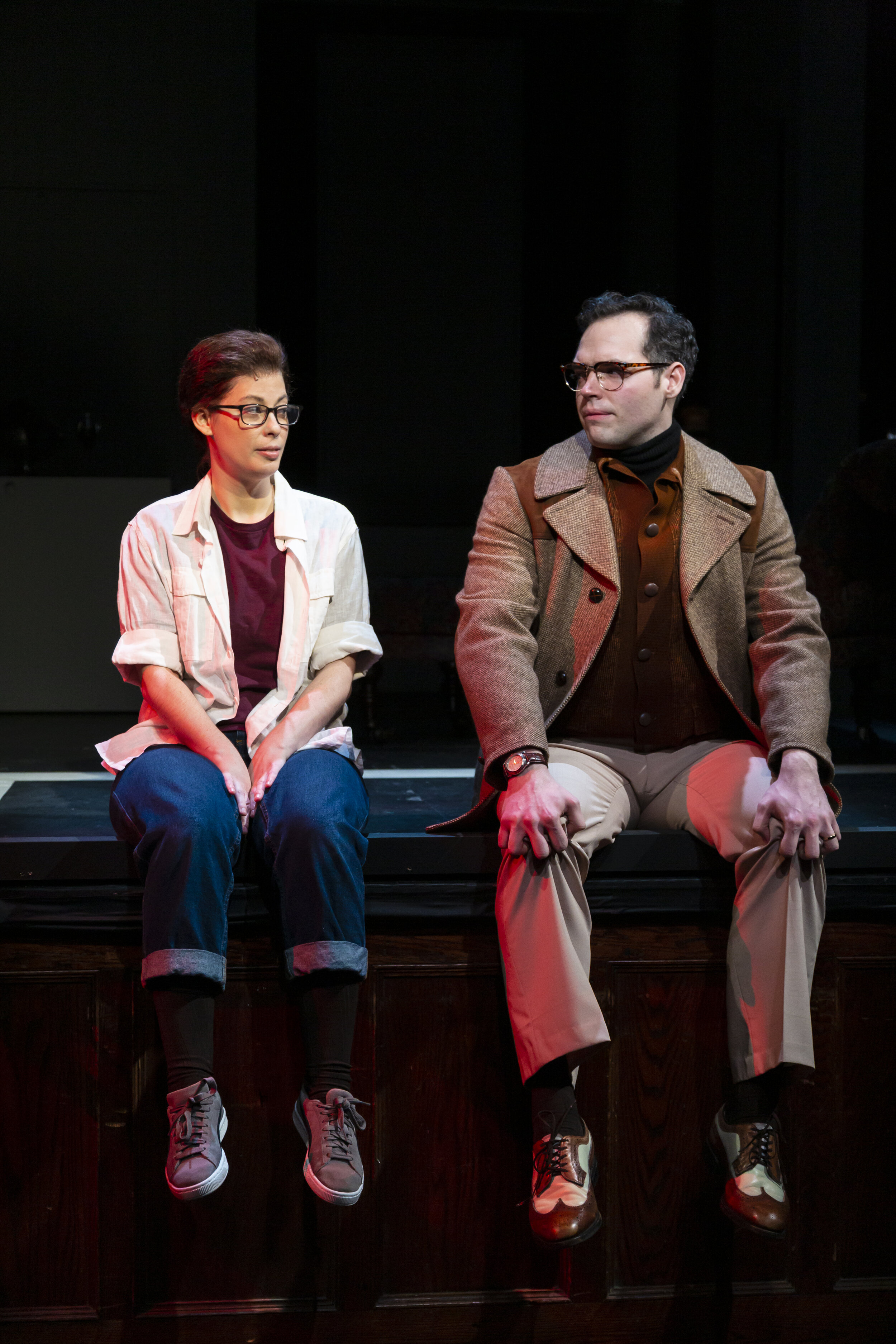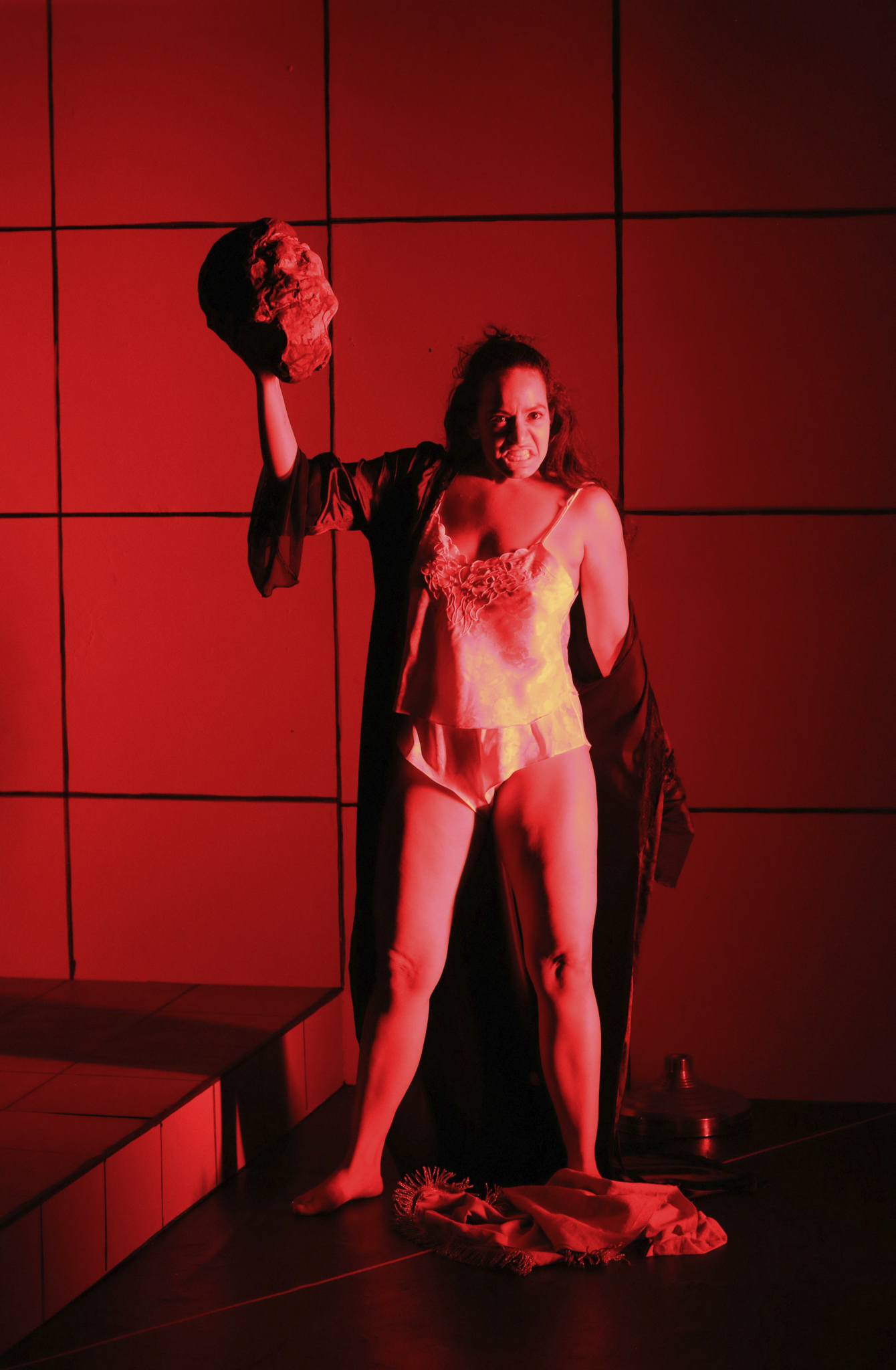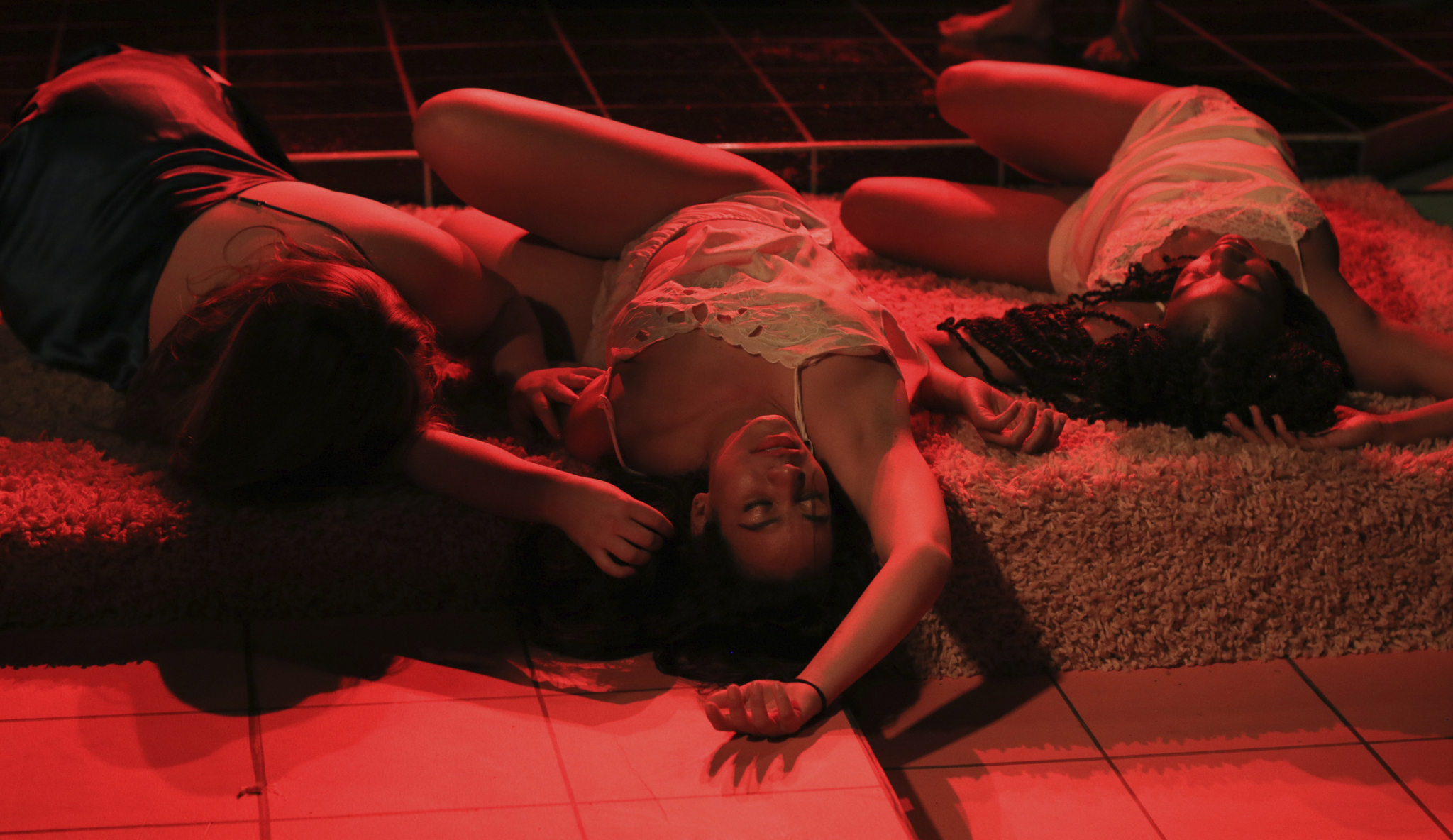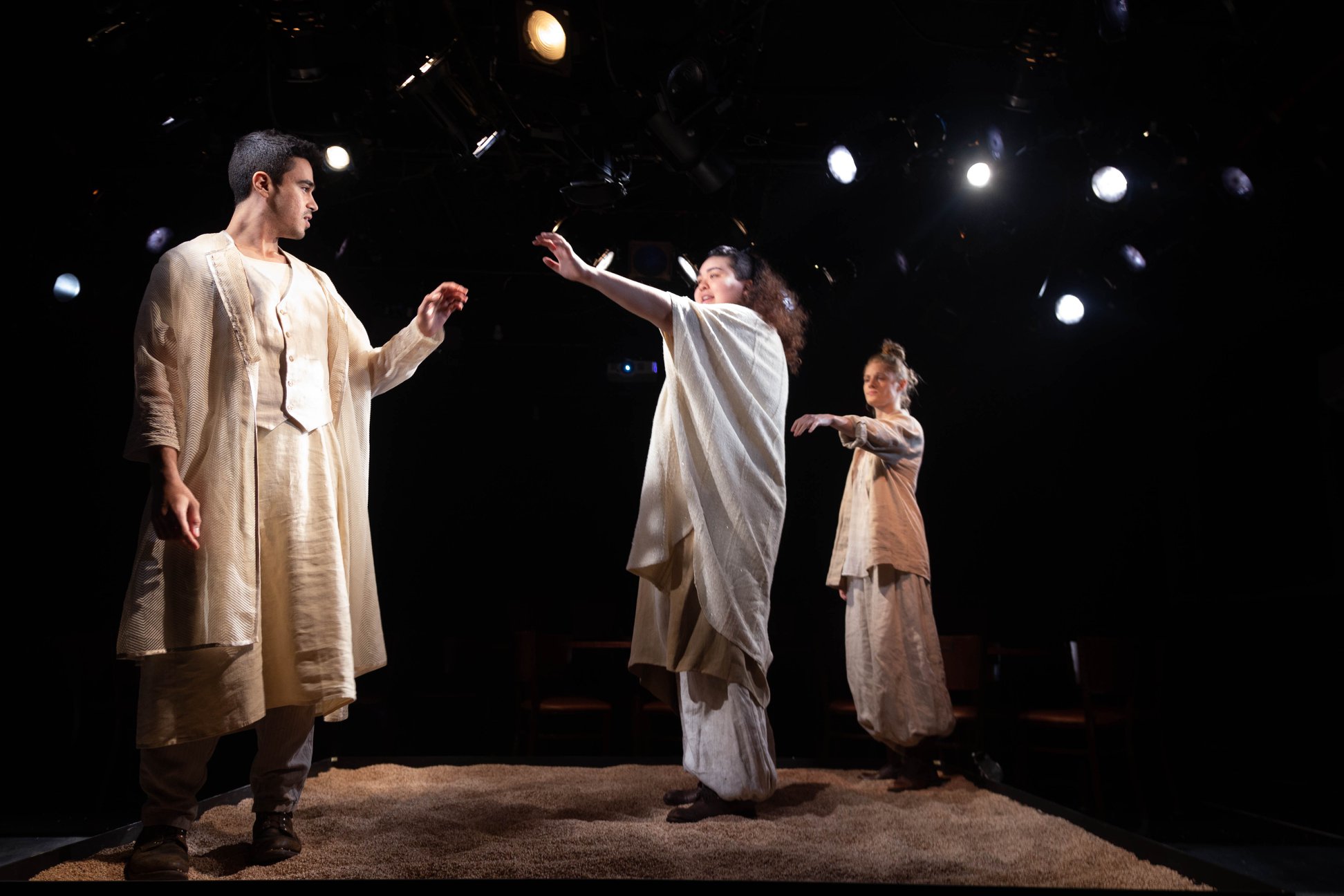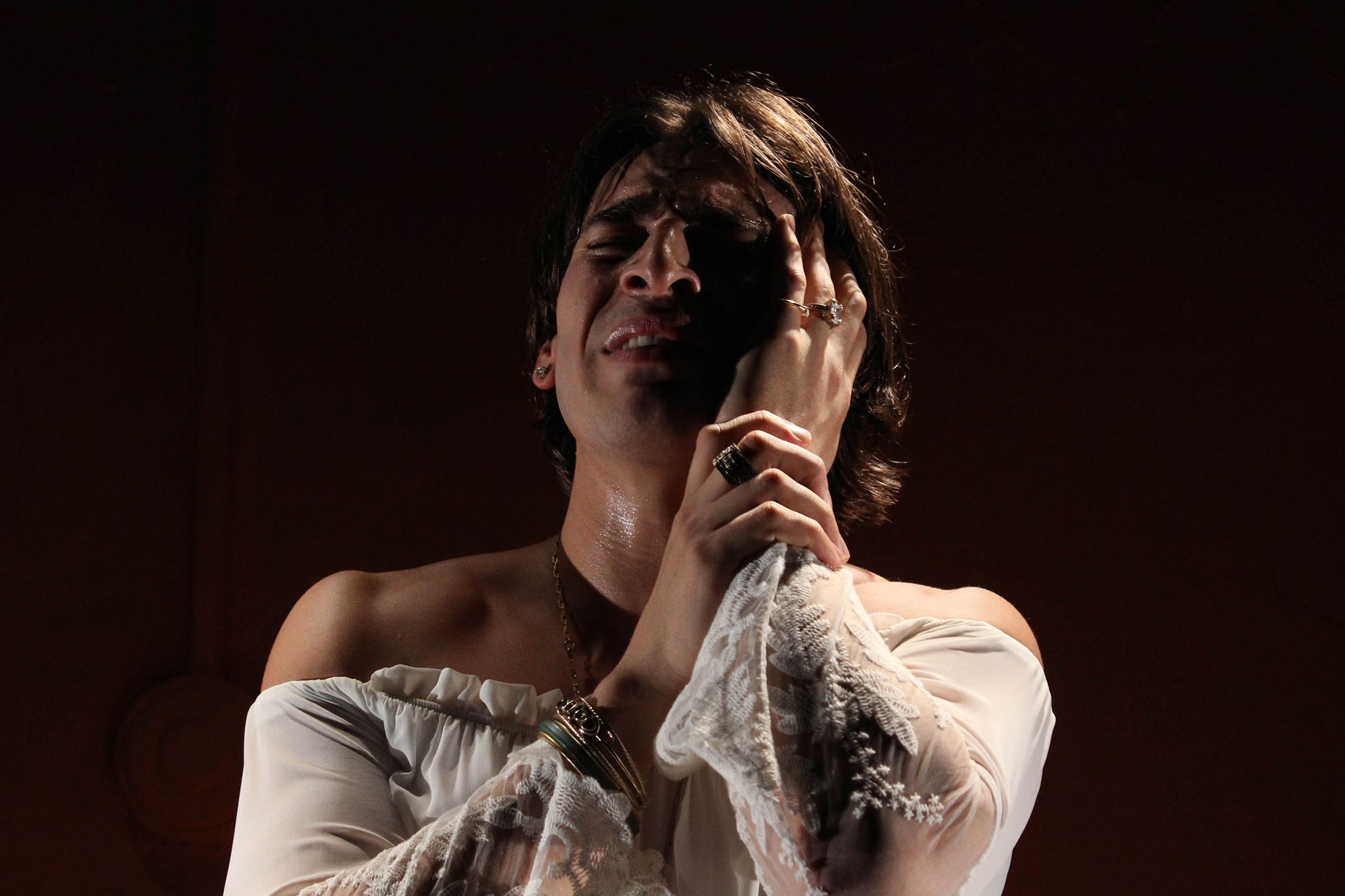Review of The Van Gogh Café, Yale Cabaret
FLOWERS, Ka.—For those passing through or living fulltime in the area, Van Gogh Café offers homey décor and comfort food galore. I mean, that Emmie Finckel has done wonders with the place. It’s a downhome oasis with sunny yellow walls, where Formica tables sit beside some with homemade wooden planks, where mismatched chairs of all descriptions abound, where a sturdy counter—presided over by Marc (Mihir Kumar), the proprietor—is apt to be peopled with regulars on a first-name basis, where assorted knick-knacks and bric-a-brac decorate the tables, the bathroom walls are adorned with painted hydrangeas, and the record player intuitively grasps the song you need to hear.
Clara (Shimali De Silva), Marc’s charming ten-year-old daughter, will take your order if you show up in the hour before school starts. With Marc somewhat conflicted about his lot in life, Clara is clearly the VGC’s biggest devotee, an enthusiast who finds every visitor a source of fascination and believes there’s an enduring magic in the walls of the café. Well, why not, the café was once a storied theater and who knows what feats have occurred there. For Clara, who might be nursing a hurt now that her mother has moved to New York, the possibilities of the place are endless, as anything might happen.
She may have a point, or at least that’s my takeaway from a recent visit. There were doings a-plenty. A source of considerable amusement was the way a stray gull had taken up residence on the roof, only to be befriended by Clara’s cat. The lovestruck feline kept snagging articles of clothing from Lon (Faizan Kareem), a hapless regular—a boot, a scarf, a glove—to award to the visiting bird. Eventually, a flock of gulls were hanging out there, only to be dispersed in a providential fashion through the agency of some passers-through, Kelly (Lily Haje) and Jack (Devin Matlock). The lady is an ornithologist, really!
That’s often the way things go around The Van Gogh Café, Clara insists, as, for instance the visit of the Fancy Lady (Jocelyn Knazik Phelps), a stranger who left behind some seeds that magically became gardenias which were, of course, the favorite flower of that aged actor (Danilo Gambini) who visited later, to recall his former glories and to await an old friend.
Events can sometimes be a little disconcerting—like a thunderstorm that knocked out the power and, according to Clara, made the food able to cook itself. Which was a good thing as Marc had a period there where he saw himself as a poet, a passion perhaps inspired by some changes in his romantic outlook. Then there’s the time Maria (Rebecca Kent)—she’s sort of a peremptory type, but really very nice—found herself face to face with her daughter, Ella (Jocelyn Knazik Phelps), who left years ago. And, guess what, she’s pregnant! So Maria gets to be a grandmother after all.
Meanwhile Sue (Lily Haje) and Ray (Nicholas Orvis) occasionally argue over nothing, but it’s worth it just to hear Sue get all agitated with that little piping voice she has. And did I mention the person at the table adjacent to me? A playwright (Taiga Christie) who wrote a lot at every visit—so, who knows, we may all be in a play one day. Kinda like that old Beatles song—“and though she feels as if she’s in a play / She is anyway.”
That’s the feeling at The Van Gogh Café, alright. Watch where you sit because the regulars have some chairs all to themselves, but there’s plenty of seats all around to catch the comings and goings (of which there are a lot!). I won’t say there’s never a dull moment—I mean, this is Kansas, after all—but the cheer is infectious, the locals likeable, the food not bad. (I had the Greek salad as a starter, then the roast turkey with mashed potatoes and green beans—all of which was very satisfying, but I found myself eyeing the fried mozz appetizer and the slab of meat loaf I saw on other plates). Marc, according to the regulars, burns pies more often than not, and there’s a general opinion that the lemon meringue isn’t up to what it was when his wife was on the premises. My slice was fine, though the crust was a bit heavy maybe. I hear that the coffee is much improved, though, and the waitstaff are like people you might see in a real play sometime. Speaking of actors, I’m really glad I got to see that old star’s visit. What a charming guy, so sweet and gracious! You’d never know the career he had, he was so humble. Very touching. That’s the kind of thing I’ll be dining out on for a while. Maybe even on that meat loaf . . .
Oh, and I should mention. The Café is open for dinner at 8 p.m. tonight and Saturday. It also offers a late night snack menu tonight (I guess since it’s a Friday it’s OK for Clara to be up that late.) And on Saturday, a brunch menu at noon. That features a menu and a show that schoolkids should appreciate, especially any that have an interest in theater. Like the Yale Cabaret—which has storied walls in its own right—The Van Gogh Café assumes that the magic of childhood extends into our joy in the arts, no matter how old we might be (I’m not saying—but I did know all the songs from the Sixties that record player played.)
There’s magic in theater, certainly. And there’s magic—theatrical and otherwise—at The Van Gogh Café. Get in on it while you can (like, before you grow up too much).
The Van Gogh Café
Proposed, directed and adapted by Emily Sorensen and Madeline Charne, based on the novel by Cynthia Rylant
Set Designer: Emmie Finckel; Costume Designer: Miguel Urbino; Lighting Designer: Tully Goldrick; Associate Lighting Designer: Matthew Sonnenfeld; Sound Designers: Liam Bellman-Sharpe & Bryan Scharenberg; Technical Director: David Phelps; Producers: Madeline Carey & Sarah Scafidi; Stage Manager: Zak Rosen
Cast: Taiga Christie, Shimali De Silva, Danilo Gambini, Lily Haje, Faizan Kareem, Rebecca Kent, Jocelyn Knazik Phelps, Mihir Kumar, Devin Matlock, Nicholas Orvis
Yale Cabaret
March 5-7, 2020



